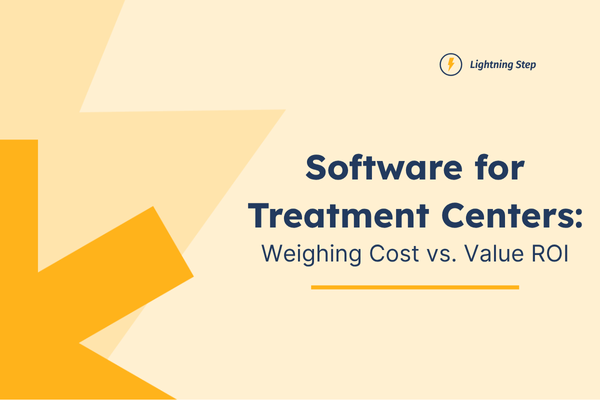
When you run a treatment center, every investment decision matters. Choosing the right software isn't just about finding the cheapest option—it's about identifying solutions that deliver real value. This balance between cost and value determines the true return on investment (ROI) for software for treatment centers. Let's explore how to evaluate this crucial balance and make informed decisions that benefit both your facility and your patients.
Treatment centers face unique challenges. You need to provide quality care while managing complex operations, compliance requirements, and financial sustainability. The right technology can transform these challenges into opportunities.
But there's a tension between immediate costs and long-term value. Many facilities focus too much on the price tag and not enough on potential returns. This short-sighted approach can lead to poor technology choices that cost more in the long run.
Software for treatment centers represents a strategic investment rather than just an expense. When properly implemented, it streamlines workflows, improves patient care, and strengthens your financial position.
Comprehensive treatment center software typically includes several integrated components:
Addiction and mental health facilities have specific needs that generic healthcare software often can't address. You need solutions that support specialized assessment tools, treatment planning, group therapy documentation, and substance use monitoring.
As explained in Not Just An EMR - Addiction and Mental Health Treatment, effective software should manage the entire patient lifecycle, not just medical records.
The total cost of software implementation goes beyond the sticker price. Here's what to consider:
Hidden costs often emerge during implementation. These might include overtime for staff training, temporary productivity dips during the learning curve, or unexpected customizations.
The value side of the equation is where treatment center software truly shines:
As highlighted in How Does an All-In-One System Help With JCAHO?, integrated software can significantly simplify accreditation processes and audits.
To calculate ROI for treatment center software, you need to measure both costs and benefits:
A basic ROI calculation might look like this:
ROI = (Financial Benefits - Total Costs) / Total Costs × 100%
But don't forget to include non-financial benefits in your overall assessment. Conducting Outcome Studies in a Behavioral Health EHR can help you track and quantify these benefits.
When weighing costs against value, consider these strategies:
The cheapest option often costs more long-term. Focus on total cost of ownership over 3-5 years.
All-in-one systems typically deliver better ROI than piecing together separate solutions. They eliminate duplicate work and reduce errors.
Choose software that can grow with your facility to avoid costly replacements later.
Quality implementation support and ongoing assistance significantly impact your success.
Budget for comprehensive training and allow time for staff to adapt to new workflows.
As noted in The Importance of Investing in Tech, technology investments should align with your facility's key operational pillars.
Real facilities have achieved remarkable results with the right software implementation:
After implementing an all-in-one solution, this center saw:
This practice reported:
As demonstrated in Improving Efficiency & Outcomes in an EHR, facilities can achieve significant workflow improvements and better patient safety with the right system.
Follow these guidelines for successful implementation:
Customization is often key to success. Our System Is Customizable explains how tailored solutions can reduce administrative time and improve outcomes.
Stay ahead by watching these emerging trends:
AI assistants are reducing documentation time by automatically generating notes from session recordings.
Seamless telehealth capabilities within EHR systems are becoming standard, as discussed in Telehealth by Lightning Step.
Advanced software will increasingly predict patient risks, treatment responses, and operational bottlenecks.
Treatment center software is becoming more accessible on smartphones and tablets, allowing for documentation and decision-making anywhere.
Better data sharing between different healthcare systems will improve care coordination and reduce duplicate testing.
The right software for treatment centers creates value that far exceeds its cost. By carefully evaluating both sides of the equation, you can make technology investments that truly pay off.
Start by assessing your facility's specific needs and pain points. Research vendors thoroughly, focusing on those with experience in behavioral health. Ask for demonstrations and references from similar facilities.
Remember that successful implementation requires planning, training, and ongoing optimization. The journey doesn't end when the software goes live—it evolves as your facility grows and technology advances.
And don't overlook the importance of integrated solutions. As explained in How Can Billing Integration Help Your Company?, systems that connect clinical and financial processes deliver significantly better results.
By focusing on value rather than just cost, you'll make technology decisions that benefit your staff, your patients, and your bottom line.



